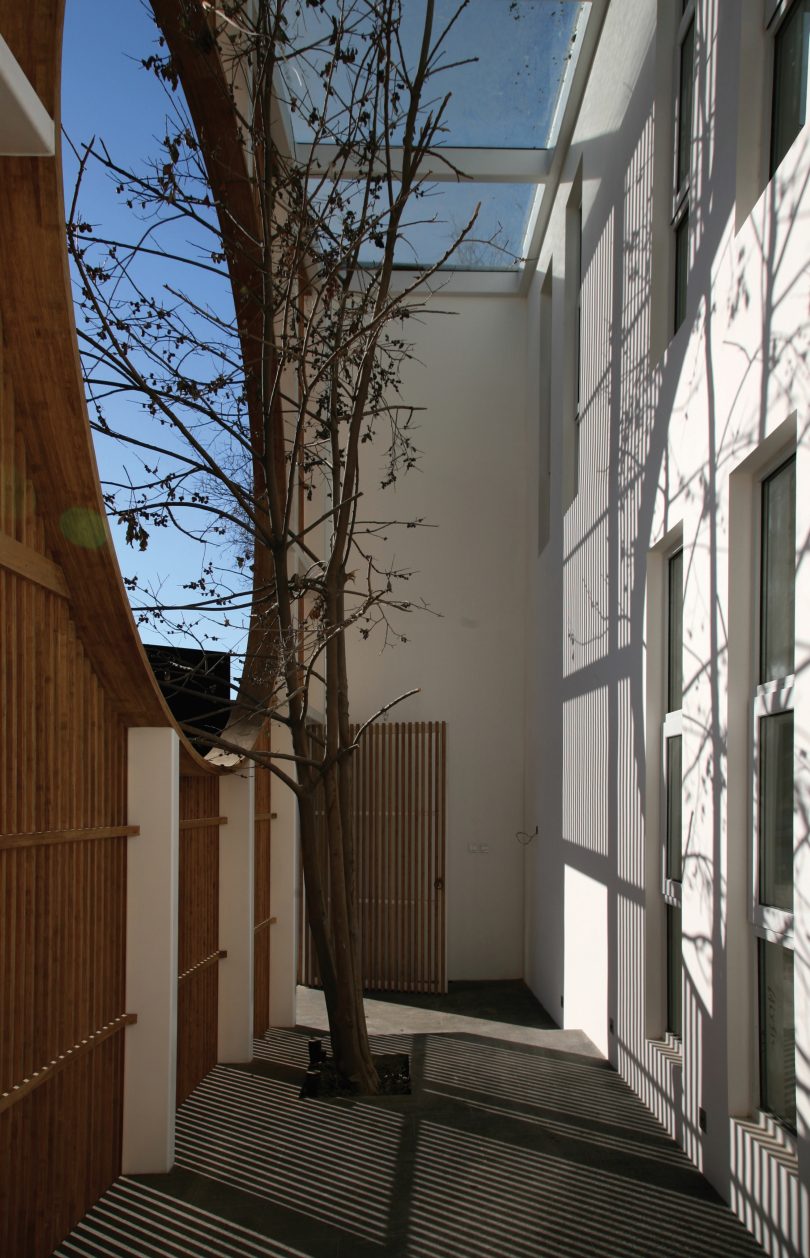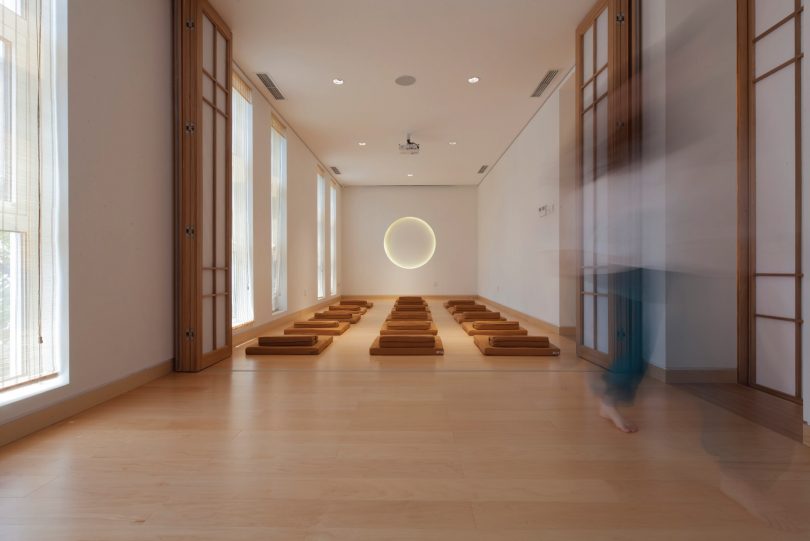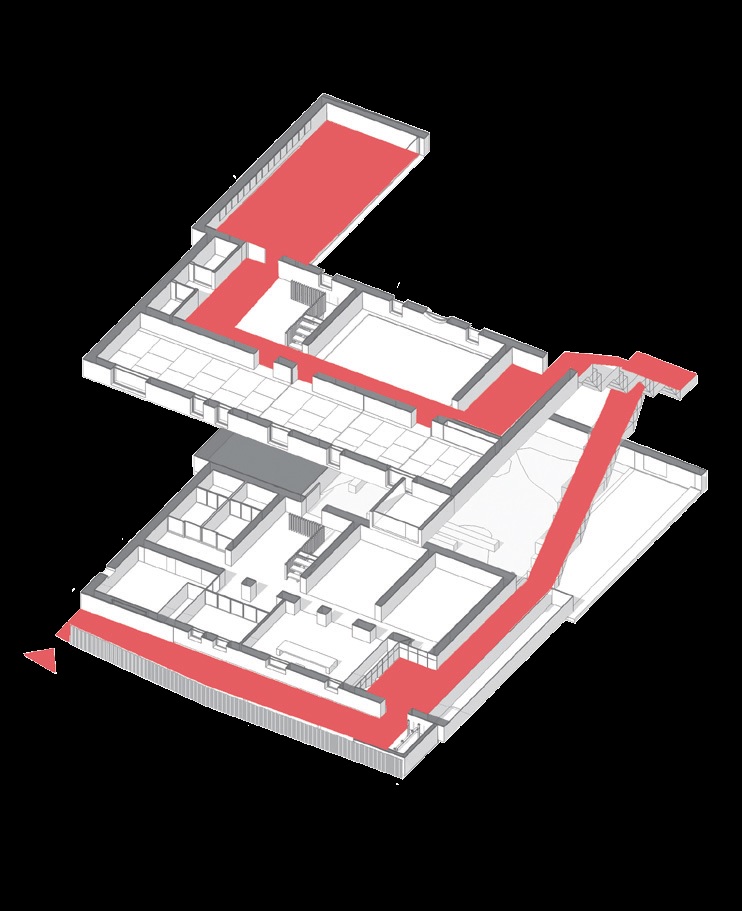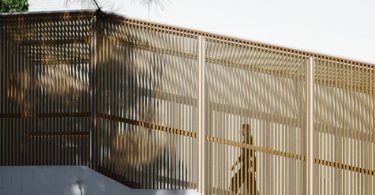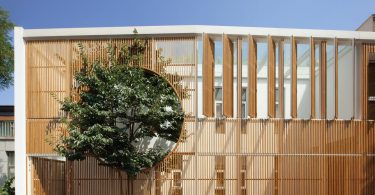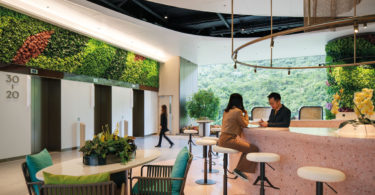A disused factory-turned-office building in Beijing, China, built in the 1970s, has been transformed by architect He Wei into the Ding Hui Yuan Zen & Tea Chamber, an open-plan space that has been described as a modern temple dedicated to the art of tea.
The green space between the building and road has been converted into a new front porch that visitors have to cross from one end to the other. An existing tree has been retained and peeps through a circular opening in the bamboo grille façade. While the tree seemingly blocks the walkway, it also serves as a physical and psychological reminder to slow down as one enters the premises.
SPACE SEQUENCE
One of the main challenges of the project was to adapt the function and style of the chamber to the existing limited structure and spatial layout. The design team configured a new building circulation to meet the privacy requirements of the space—a private ground floor and a public second floor. The latter serves as a gathering space that houses a guqin music room, small and large tearooms, and a meditation room.
The result is a restructured space sequence that weaves harmoniously through the Zen-infused interior, enforcing a slower rhythm and invoking inner calm. The long zigzagging route traverses through alternating bright and dark spaces, bringing visitors from the west side entrance up a semi-open corridor to the second floor, down to the ground floor, and through the Chinese garden.
The traditional Chinese garden is housed within a 100-square-metre backyard, which can be viewed and enjoyed at different times, from different perspectives, via the building’s see-through grating racks and the ramp-like folded stairway. This sight connection and conversion of the indoors and outdoors is a key element of the design brief.
SLOW AND SIMPLE
The interiors follow a similar ideology of simplicity, with minimal ornamentation, selected relics and round windows. Bathed in natural light that changes and fades throughout the day, the ambience has a meditative quality that brings one’s focus to a natural state of stillness.
Natural materials and elements, such as wood, bamboo, stone, water, light and shadow, were chosen to reflect the essence of Zen—bright and simple, without sacrificing quality and details. For example, the designers added a 1-centimetre-long rice rod into the mortar as wall plaster, which looks plain white from a distance, but reveals a golden grain texture up close.
PROJECT DATA
Project Name: Ding Hui Yuan Zen & Tea Chamber
Location: Beijing, China
Completion Date: January 2016
Site Area: 300 square metres
Gross Floor Area: 450 square metres
Number of Rooms: 11
Building Height: 10 metres
Client/Owner: Better Lift Art Club Co, Ltd
Architecture Firm: He Wei Studio/3andwich Design
Principal Architect: He Wei
Interior Design Firm: He Wei Studio/3andwich Design
Design Consultants: Xue Xiao-Ming; Zhang Yi-Cheng
Design Team: He Wei; Chen Long; Wang Qi; Zhao Zhuo-Ran
Civil & Structural Engineer: Pan Cong-Jian
Lighting Consultant: Zhang Xin; Han Xiao-Wei; Zhou Xuan-Yu
Landscape Architect: He Wei Studio/3andwich Design
Main Contractor: Beijing GHLH Construction Co, Ltd
Images: Zou Bin; He Wei

 Malaysia
Malaysia Singapore
Singapore Indonesia
Indonesia Tiếng Việt
Tiếng Việt ประเทศไทย
ประเทศไทย


